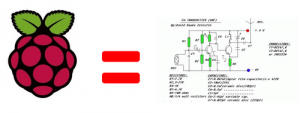
The Slow Scan TV images below will update every 30 seconds if I’m running the reciever for them. You never know what you might see so is kinda cool to see them appear in real time. I’m showing the last 20 images which have been decoded, usually from either 20m or 40m bands.
Slow-scan television (SSTV) is a picture transmission method, used mainly by amateur radio operators, to transmit and receive static pictures via radio in monochrome or color.
A literal term for SSTV is narrowband television. Analog broadcast television requires at least 6 MHz wide channels, because it transmits 25 or 30 picture frames per second (in the NTSC, PAL or SECAM color systems), but SSTV usually only takes up to a maximum of 3 kHz of bandwidth. It is a much slower method of still picture transmission, usually taking from about eight seconds to a couple of minutes, depending on the mode used, to transmit one image frame.
Since SSTV systems operate on voice frequencies, amateurs use it on shortwave (also known as HF by amateur radio operators), VHF and UHF radio.
Read More